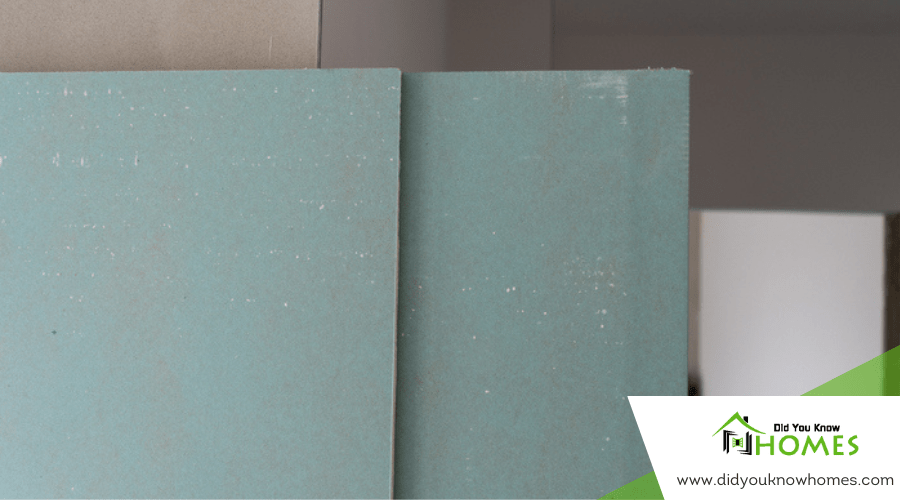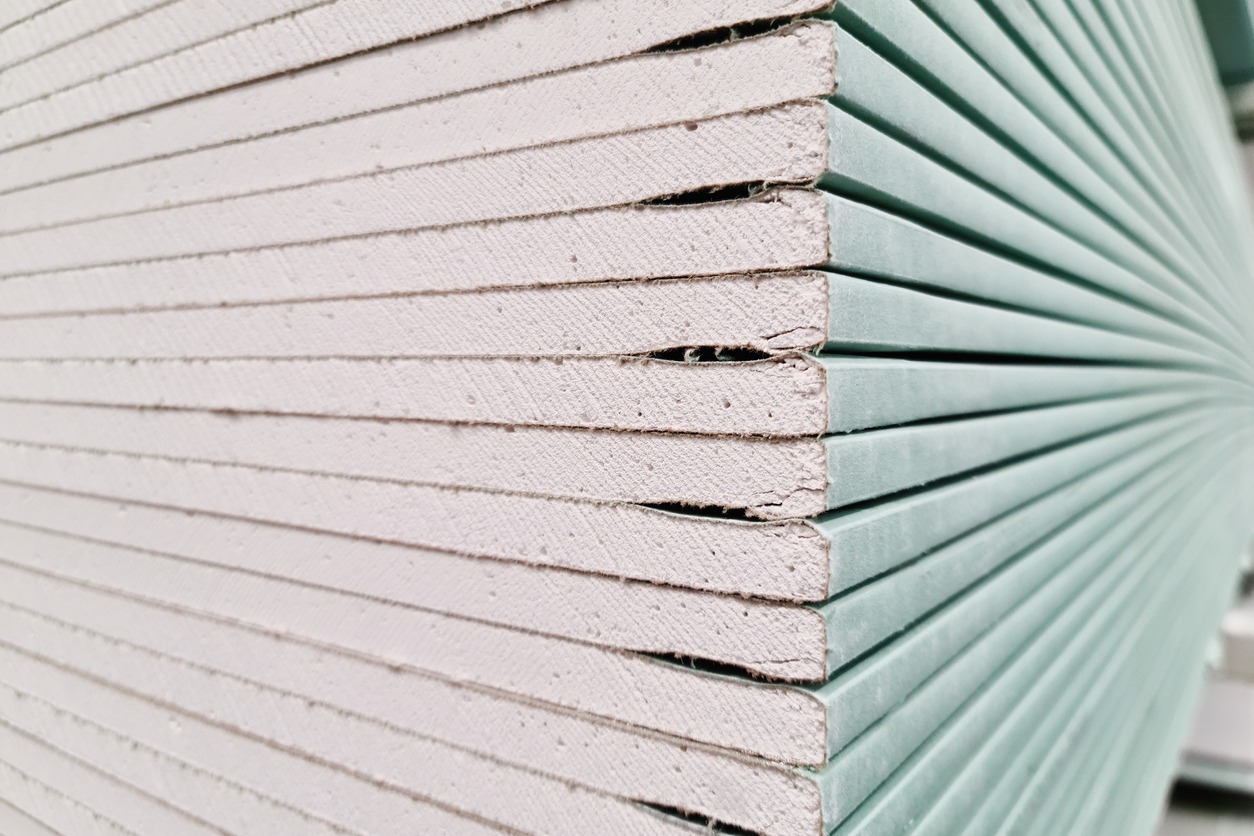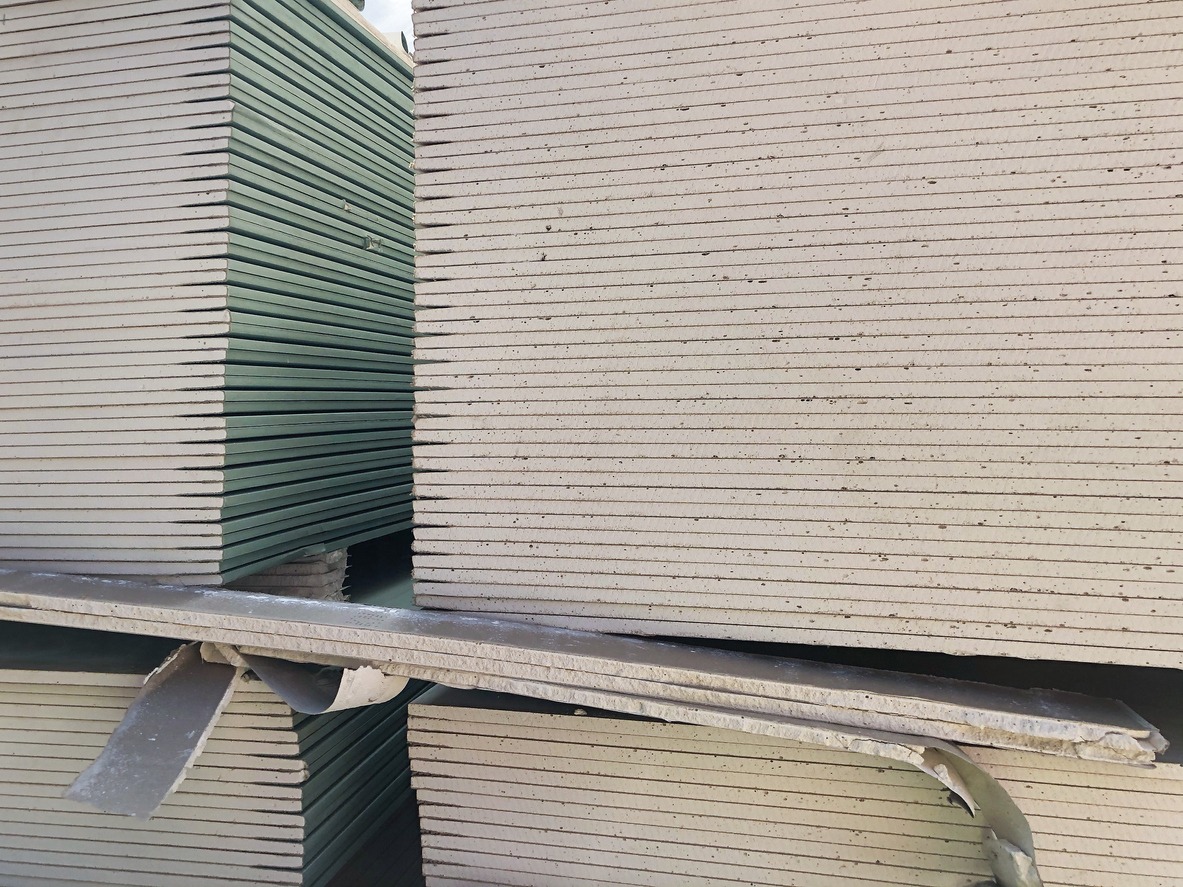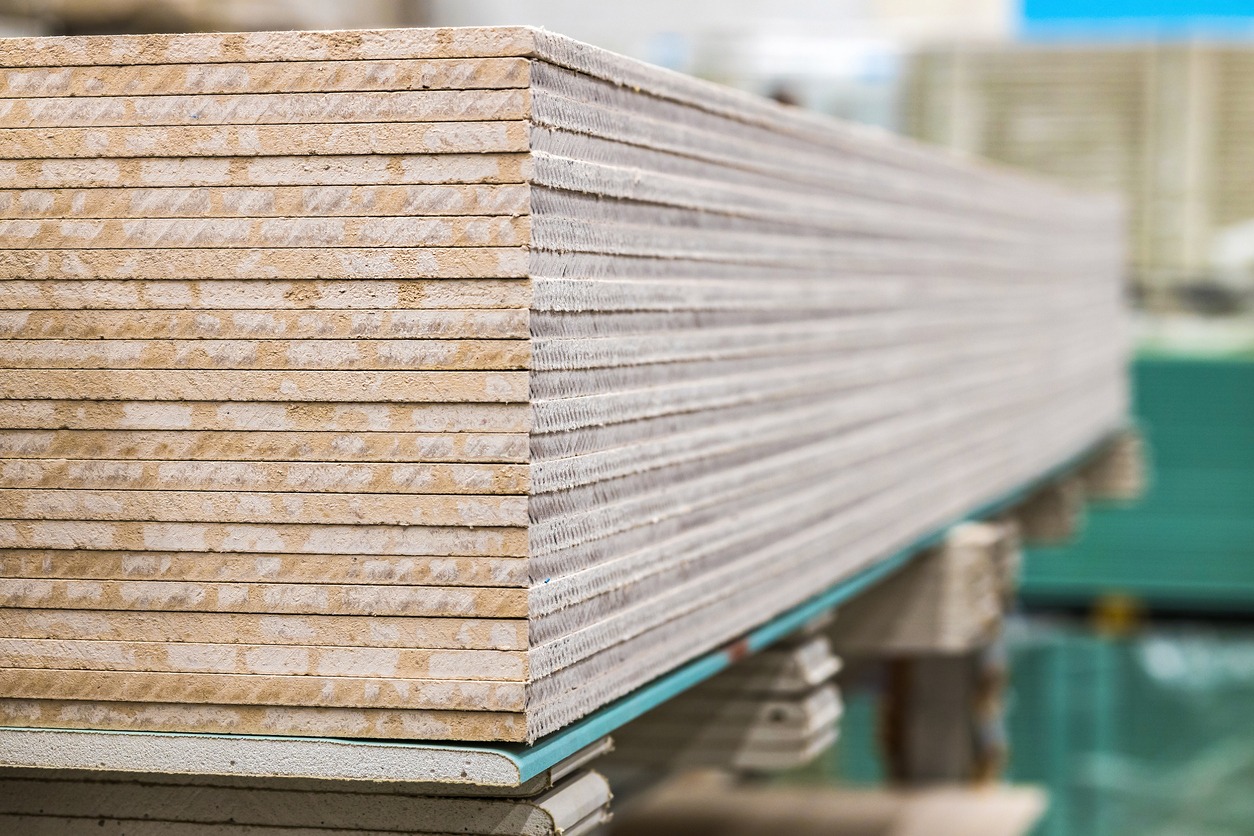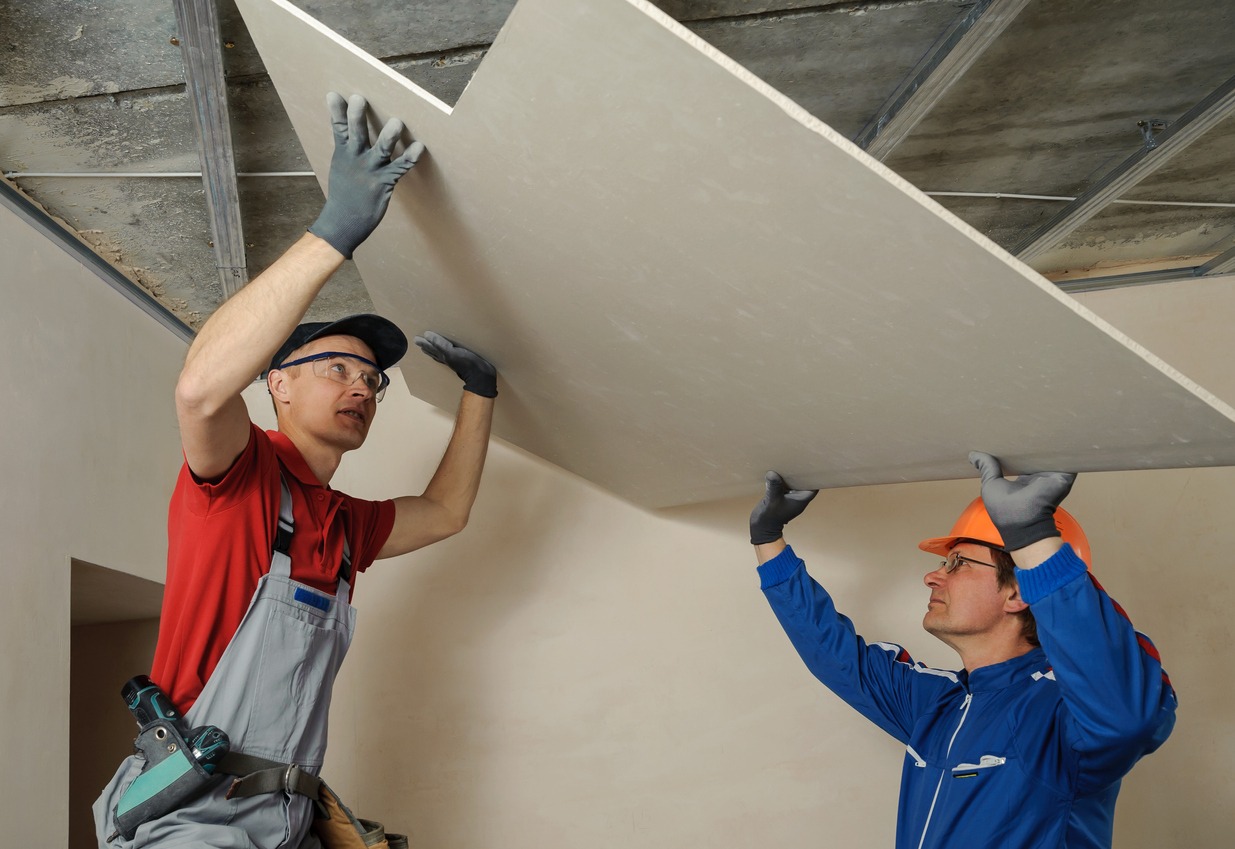In the world of construction, picking the right drywall thickness isn’t akin to choosing between shades of white paint; it’s a decision that demands your attention and understanding. You’re maneuvering through options from the lightweight 1/4-inch, perfect for that curved wall in your project, to the hefty 5/8-inch, a champion in soundproofing and fire resistance. But here’s the catch: each thickness serves a unique purpose and fits specific framing needs. As we unpack the pros and cons of these variations, you’ll discover how to match them with your project’s demands, ensuring both structural integrity and budget alignment. Stick around to uncover the nuances that could make or break your next renovation or build.
Understanding Drywall Types
To choose the right drywall for your project, understanding the differences among types like Gypsum, Firecode Core, and Mold Tough is vital, each designed for specific needs such as fire or moisture resistance. Gypsum Board, a widely used type, offers versatility for various applications, while specialized options like Firecode Core cater to areas requiring enhanced fire protection. When you’re deciding, consider not just the space’s purpose but also the benefits each type brings to your project.
Standard Drywall is the go-to for many due to its balance of cost, efficiency, and ease of installation. However, delving deeper into the unique properties of each option is important. For instance, if you’re working on a bathroom or kitchen, Mold Tough might be your best bet due to its moisture-resistant qualities. On the other hand, spaces like home theaters or studios could benefit from drywall types with superior soundproofing capabilities. By understanding these nuances, you’re better equipped to select the drywall that not only meets your project’s requirements but also enhances its overall quality and safety.
Standard Drywall Thickness
When you’re selecting drywall for your project, understanding the common thicknesses is essential. For walls, the standard 1/2 inch thickness works well, but you might need thicker options for ceilings or areas needing more durability. Let’s look at how to match the right thickness to your specific needs, ensuring your construction’s integrity and performance.
Common Thicknesses Explained
Understanding the common thicknesses of drywall is essential as you decide which option best suits your project’s requirements. Standard drywall typically measures 1/2 inch, widely used for walls in residential settings. This thickness strikes a balance between durability and ease of installation, making it a popular choice for many types of drywall applications. However, if you’re tackling areas that demand higher fire resistance or moisture protection, you might lean towards thicker options like 5/8 or even 1 inch. These provide enhanced durability and support, ideal for specific needs. On the flip side, thinner drywall is lighter and more cost-effective, perfect for curved walls or smaller spaces. Remember, picking the right thickness from the common drywall options is about weighing cost, weight, and performance to guarantee your project’s success.
Choosing Thickness for Walls
Selecting the right thickness for your walls is important, as standard drywall typically measures 1/2 inch, balancing durability and ease of installation. When you’re planning your project, knowing which drywall thicknesses to choose is vital for ensuring your walls have the proper load-bearing capacity and performance. Thicker drywall, like 5/8 or 1 inch, might be your go-to for areas needing more durability or fire resistance. Meanwhile, thinner options could be better suited for smaller rooms or creating curved walls.
Here’s a quick guide to help you choose the right thickness:
| Thickness | Best For |
|---|---|
| 1/2 inch | Standard wall coverage |
| 5/8 inch | Enhanced durability |
| 1 inch | High durability/fire resistance |
| Thinner | Small rooms/curved walls |
Ceiling Drywall Considerations
Choosing the right thickness for your ceiling’s drywall is important, as standard options typically measure 1/2 inch. However, you might want to contemplate thicker drywall like 5/8 inch for your ceiling to better handle the weight. Sure, 1/2 inch drywall is lighter and easier to install on ceilings, but the thicker option provides better sag resistance, especially for ceilings with wider joist spacing. It’s important to take into account the ceiling joist spacing and the expected weight load when picking the right drywall thickness. Thicker ceiling drywall guarantees a sturdier and more durable surface, preventing any potential sagging and adding an extra layer of robustness to your home’s structure.
Non-Standard Drywall Thickness
When you’re tackling specialty projects, you might find yourself considering non-standard drywall thicknesses, like 3/8 inch or 1 inch. These unique sizes can greatly influence both the performance and the cost of your project. Keep in mind, opting for these thicknesses often means you’ll face longer lead times and higher expenses due to custom ordering requirements.
Specialty Applications
For specialty projects requiring unique solutions, non-standard drywall thicknesses like 1/4 inch and 3/8 inch offer the versatility needed. When you’re tackling areas where standard thicknesses don’t quite fit the bill, these thinner options come into play, especially in specialty applications. You’ll find them perfect for creating curved walls in your renovation projects or when you’re looking to reduce weight in small rooms. They’re also a go-to for custom-built furniture, art installations, or even temporary structures that demand a specific look or functionality. While these non-standard thicknesses open up a world of creative possibilities, remember they may not be as readily available. You might need to plan ahead, reaching out to specific manufacturers or suppliers to get your hands on them for your unique project requirements.
Impact on Costs
Opting for non-standard drywall thicknesses can greatly impact your project’s budget due to the need for custom orders and potential additional costs. If you’re considering going off the beaten path with drywall thickness, remember that these custom options may not be readily available. You’ll likely face higher costs because of the unique production processes and limited availability. This can stretch your project budgets, as specialized thicknesses necessitate specific materials and handling. Before you make a decision, it’s wise to consult with suppliers. They can provide insights on pricing and lead times, helping you weigh the benefits against the costs. Always balance your project’s specific needs with budget constraints to make certain you’re making the most cost-effective choice.
Curved Surface Applications
In applications involving curved surfaces, you’ll find that thinner drywall, such as 1/4-inch or 3/8-inch, offers the necessary flexibility for a perfect fit. This is especially true when you’re dealing with archways or rounded corners where standard thicknesses just won’t do. The pliability of thinner drywall makes it an ideal choice for these types of curved surface applications.
- Flexibility for Shaping: The main advantage of thinner drywall is its flexibility, which allows for easy bending and shaping around curves without the risk of cracking. This makes it perfect for custom designs or unique architectural features in your home.
- Tapered Edges for Seamless Finishes: Thinner drywall often comes with tapered edges, facilitating smoother changes and more smooth finishes on curved walls. This feature helps in achieving a professional look even in the most challenging spaces.
- Challenges with Thicker Drywall: Using thicker drywall, like 1/2-inch or 5/8-inch, for curved surfaces may lead to issues, such as cracks or breaks. This is because thicker drywall lacks the flexibility required to conform to curves, making thinner options a more appropriate choice.
Choosing the right thickness for curved surface applications ensures not only aesthetic appeal but also structural integrity and longevity.
Fire Resistance Options
When choosing drywall for areas requiring enhanced safety, it’s important to think about fire-resistant options with thicker cores to greatly improve fire protection. Fire-resistant drywall, especially Type X drywall, features a core that’s thicker than standard drywall, ranging from 5/8 to 1 inch. This thickness is not just for show; it plays a vital role in delaying heat transfer during a fire, giving you and your loved ones more time to safely exit the building.
You’ll find that fire-resistant drywall is a must in certain parts of your home or building, especially where building codes strictly require materials that can withstand fire for a specific period. It’s all about containment and prevention – thicker drywall with fire-resistant properties is key to stopping a fire from spreading, protecting not just the structure itself but also the lives within it.
Understanding the specific fire rating requirements for different areas in your building is essential. It ensures you select the appropriate fire-resistant drywall thickness, meeting both safety standards and your peace of mind. Remember, it’s not just about following the code; it’s about creating a safer environment. So, when you’re planning your construction or renovation, make sure to ponder Type X and other fire-resistant drywall options.
Soundproofing Capabilities
When you’re looking for ways to reduce noise in your home, consider the thickness of your drywall. Thicker drywall, specifically the 5/8-inch variety, offers better sound barrier efficiency due to its increased mass. This choice directly impacts how well sound is blocked from traveling through walls and ceilings, making it important for creating quieter, more serene spaces.
Sound Barrier Efficiency
Considering the importance of a peaceful environment, you’ll find that thicker 5/8-inch drywall greatly enhances soundproofing capabilities, outperforming its thinner counterparts. The choice of drywall thickness is vital for achieving the desired acoustic performance in your space, especially in areas where noise control is a priority.
- Thicker drywall greatly reduces sound transmission between rooms or floors, providing a quieter and more serene living environment.
- In spaces like home theaters or bedrooms, opting for 5/8-inch drywall can make a substantial difference in sound barrier efficiency.
- Understanding the relationship between drywall thickness and soundproofing benefits is essential for making informed decisions about the materials used in your construction or renovation project.
Material Thickness Impact
Understanding the impact of material thickness is important, as thicker drywall greatly enhances soundproofing capabilities in your home or office. Opting for a 5/8-inch thickness, for instance, offers superior noise control compared to slimmer alternatives. This increased thickness doesn’t just reduce sound transmission through walls; it boosts acoustic insulation greatly. If you’re aiming to create a quiet space, like a home theater or bedroom, where noise control is vital, choosing thicker drywall is a smart move. The soundproofing benefits you’ll experience are directly tied to the thickness of the drywall material you use. By selecting thicker drywall with enhanced soundproofing properties, you’re investing in a more serene and peaceful indoor environment.
Moisture-Resistant Drywall
For high humidity areas like bathrooms, you’ll find moisture-resistant drywall in green and purple, designed to prevent damage from moisture exposure. When you’re selecting the right type of drywall for these wet environments, it’s important to take into account the thicknesses available. Moisture-resistant drywall comes in both half-inch and 5/8 inch thicknesses, offering flexibility depending on your project’s specific requirements.
This specialized drywall is not just about preventing moisture penetration; it’s about ensuring the longevity and integrity of your walls and ceilings in damp locations. Here’s what you need to know:
- Color Coding: The green and purple colors make it easy for you to pick the right material for moisture-prone areas.
- Thickness Options: Available in half-inch and 5/8 inch thicknesses, allowing for customization based on structural needs.
- Designed for Dampness: Specifically engineered to withstand moisture and humidity, providing durable protection in high humidity environments.
Estimating Drywall Costs
After selecting the right type of moisture-resistant drywall for your project, it’s important to accurately estimate the costs involved in covering your space. Estimating drywall costs isn’t just about calculating the square footage; it also involves comparing prices and looking for the best deals on new drywall. You’ll need to take into account the cost of materials such as screws, joint compound, and tape, which are essential for the installation process.
Here’s a quick overview to help you budget:
| Material | Average Cost | Notes |
|---|---|---|
| Drywall | $12 – $20 per sheet | Bulk purchases may offer discounts. |
| Screws | $6 per pound | Required for installation. |
| Joint Compound | $15 per bucket | Essential for seams and finishing. |
Finding discounts or bulk pricing options can significantly reduce the overall cost. Remember, proper estimation makes sure you stay within budget and achieve project success. By measuring your area accurately and comparing prices from different suppliers, you can find the best deal for your new drywall project. Keep in mind that additional costs for installation materials shouldn’t be overlooked in your budget.
Installation Best Practices
Why not guarantee your project’s success by following drywall installation best practices, tailored to match the specific needs of your space? Ensuring you choose the right drywall thickness is just the start. Each type of space you’re working on, whether it’s a high-humidity bathroom or a spacious living room, demands different drywall specifications to maintain structural integrity and provide that seamless, professional finish you’re aiming for.
To help you nail this process, consider these essential tips:
- Select the appropriate thickness: For most interior walls, 1/2-inch drywall is standard, but for ceilings or walls where higher durability is needed, opting for 5/8-inch may be better. Always match the thickness to the application to assure a lasting installation.
- Choose moisture-resistant drywall for wet areas: Bathrooms, kitchens, and laundry rooms benefit from moisture-resistant drywall to prevent damage from humidity.
- Utilize tapered edge drywall for easier finishing: Tapered edges facilitate taping and mudding, allowing for smoother joints and a more attractive finish.
Durability and Maintenance
Understanding the durability and maintenance of drywall starts with recognizing that thicker drywall isn’t just more essential; it also demands specific care to keep it in top condition over the years. Thicker drywall enhances the durability and load-bearing capacity of your walls and ceilings, making them less prone to damage from daily wear and tear. However, to guarantee its long-term durability, you’ll need to invest in proper maintenance.
Maintaining your drywall, regardless of its thickness, involves regular inspections and prompt repairs. Small cracks or holes can quickly escalate into larger problems if left unattended. Thicker drywall may require additional screws and supports during installation to maintain its structural integrity over time. This step is critical to prevent sagging or cracking, which can compromise the durability you’re relying on.
Choosing the right thickness for your specific project is also a key factor in minimizing maintenance needs. Areas prone to high traffic or moisture may benefit from thicker drywall for added durability, but remember, the thicker your choice, the more attention you’ll need to give to its maintenance. Regularly inspecting and addressing any issues early on will help extend the lifespan of your drywall, guaranteeing it remains sturdy and reliable for years to come.
Conclusion
To guarantee, choosing the right drywall thickness isn’t just about what fits; it’s about what works best for your project. Whether you’re aiming for better soundproofing with thicker options, needing lightweight drywall for ceiling applications, or seeking moisture resistance in damp areas, there’s a fit for every need. Remember to take into account both durability and maintenance, alongside installation practices, to ensure your walls stand strong and look great for years. Make your decision wisely, keeping your specific requirements and budget in mind.
